
12 Best Lunch Spots In Napa
Best Lunch In Napa – Our 12 Favorite Spots! Lunch is a must when you’re out wine tasting! Whether you’re in the mood for a
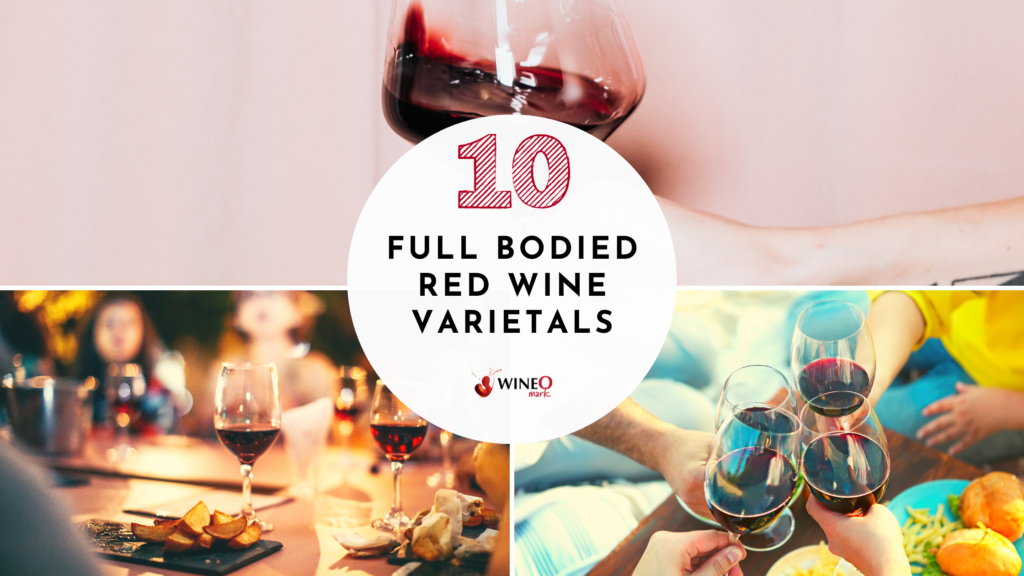
The term "full-bodied" refers to the weight and texture of the wine in your mouth. And it can be often described as a "chewy" or "textured" feel. But it typically has a rich and full texture that coats the palate and lingers long after each sip. This weight is usually achieved through a combination of factors, including higher alcohol content, more tannins, and a greater concentration or flavors of fruit.
A full-bodied red wine is a popular choice among wine enthusiasts who enjoy robust and bold flavors. These wines are typically made from red grape varieties that have thick skins, high tannins, and deep colors. They are often aged in oak barrels, which can add additional complexity and depth to the wine.
Some of the most popular full-bodied red wines include Cabernet Sauvignon, Merlot, Syrah, and Zinfandel. These wines are often produced in warmer climates, where the grapes can ripen fully and develop their signature bold flavors.
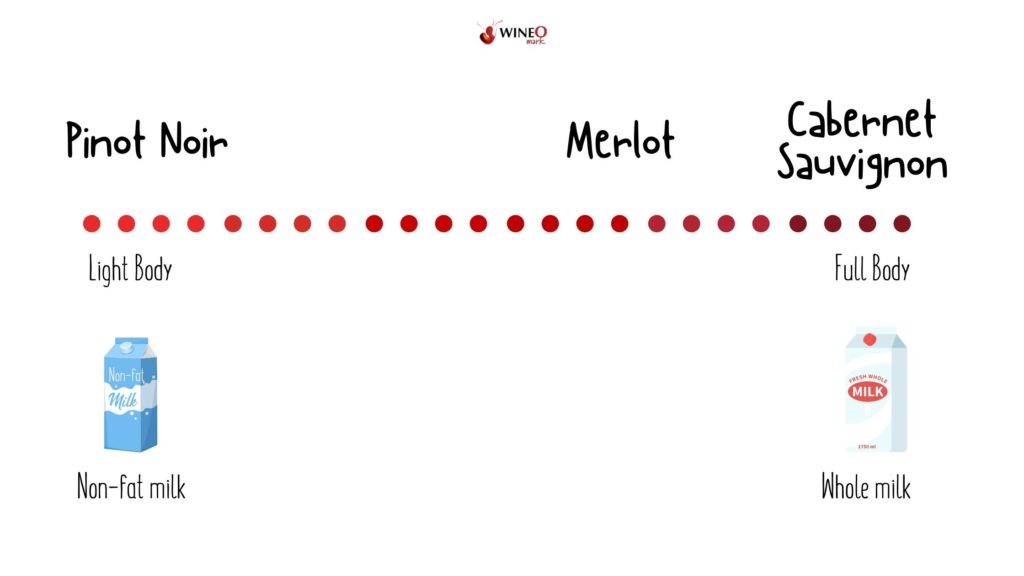
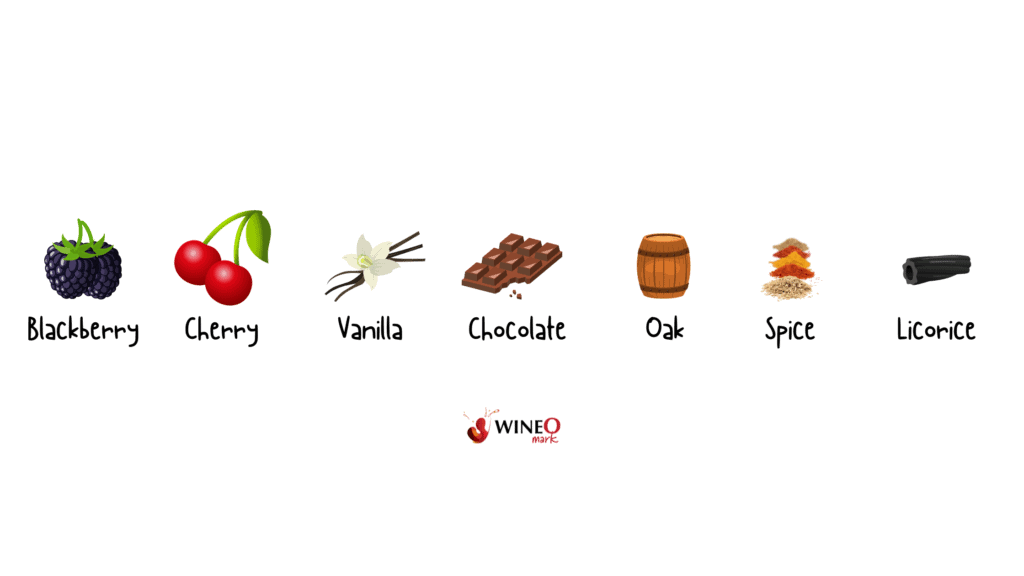
Cabernet Sauvignon is the most famous full-bodied red wine in the world. It has a rich and robust flavor profile, with dark fruit flavors, high tannins, and aging potential. Cabernet Sauvignon is often aged in oak barrels, which can add additional flavors of vanilla, toast, and spice. And it’s grown in many regions around the world, including California, Bordeaux, and Australia.
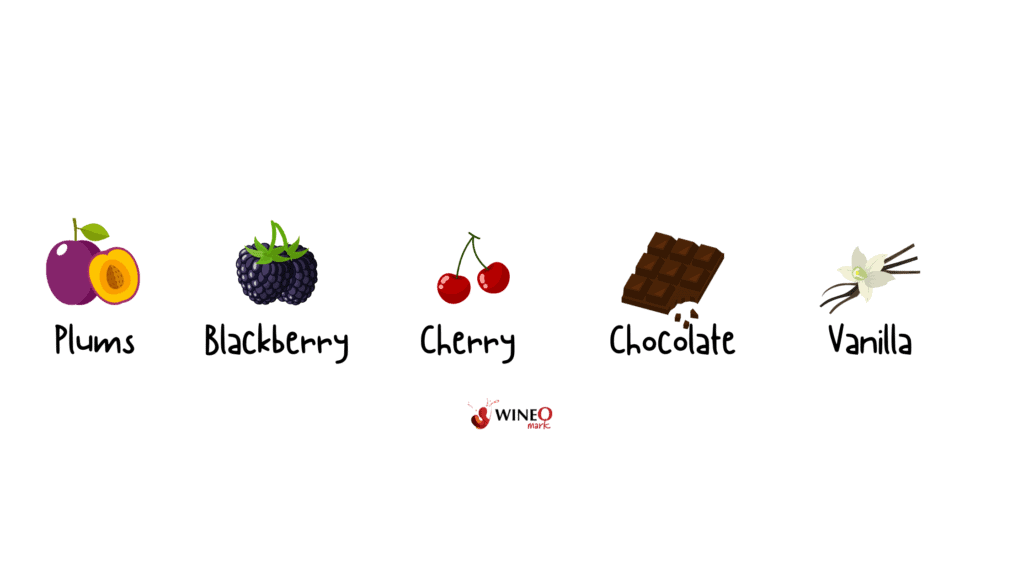
Merlot is another popular full-bodied red wine that is known for its smooth and velvety texture. And it has fruit forward flavors of black cherry, plum, and chocolate. Plus it can be blended with Cabernet Sauvignon to create a Bordeaux-style red wine. Due to its versatility, it’s grown in many regions around the world, including Bordeaux, California, and Washington State.

Syrah, also known as Shiraz, is a full-bodied red wine that is commonly produced in warmer climates such as Australia, France, and California. It has a rich, dark color and is characterized by its peppery and spicy flavors, with notes of blackberry, black currant, and leather.
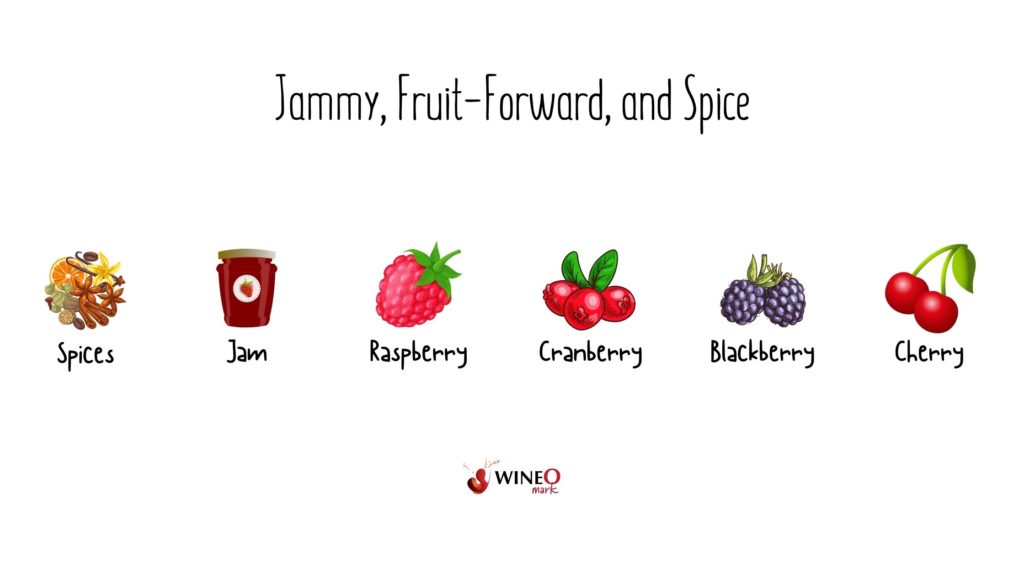
Zinfandel is a full-bodied red wine that is known for its bold and jammy flavors of blackberry, raspberry, and black cherry. And it’s most commonly associated with California, where the warm climate allows the grapes to fully ripen and develop their intense flavors.
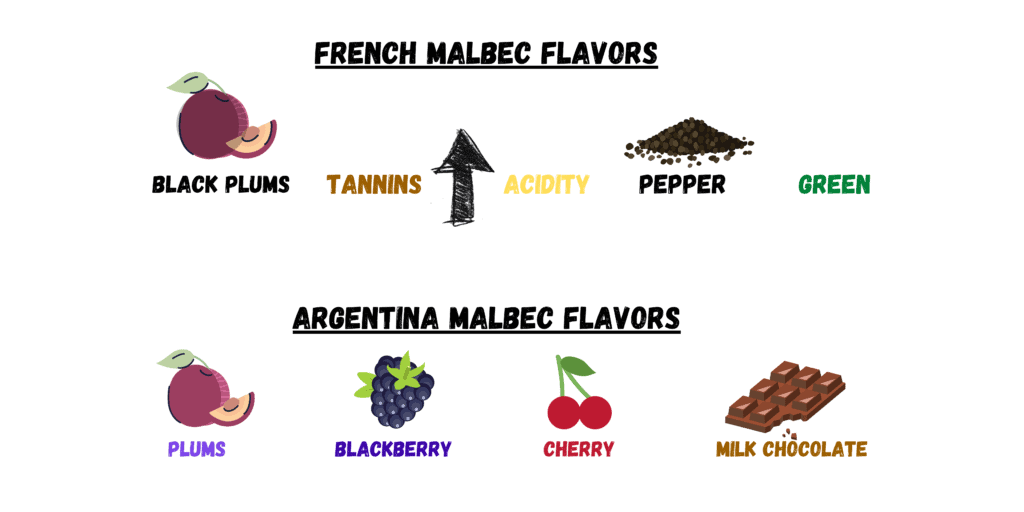
Originally from France but now widely grown in Argentina, Malbec produces full-bodied red wines. And it has a deep, dark color and is known for its flavors of black cherry, plum, chocolate, and tobacco. Malbec is often aged in oak barrels, which can add additional flavors of vanilla and spice.

Petite Sirah is a full-bodied red wine that is often grown in California, where it is called Durif. And it has a deep, dark color that is characterized by its rich and jammy dark fruit flavors of blackberry, blueberry, and plum. Also it typically has high tannins and is often aged in oak barrels, which can add additional complexity to the wine.
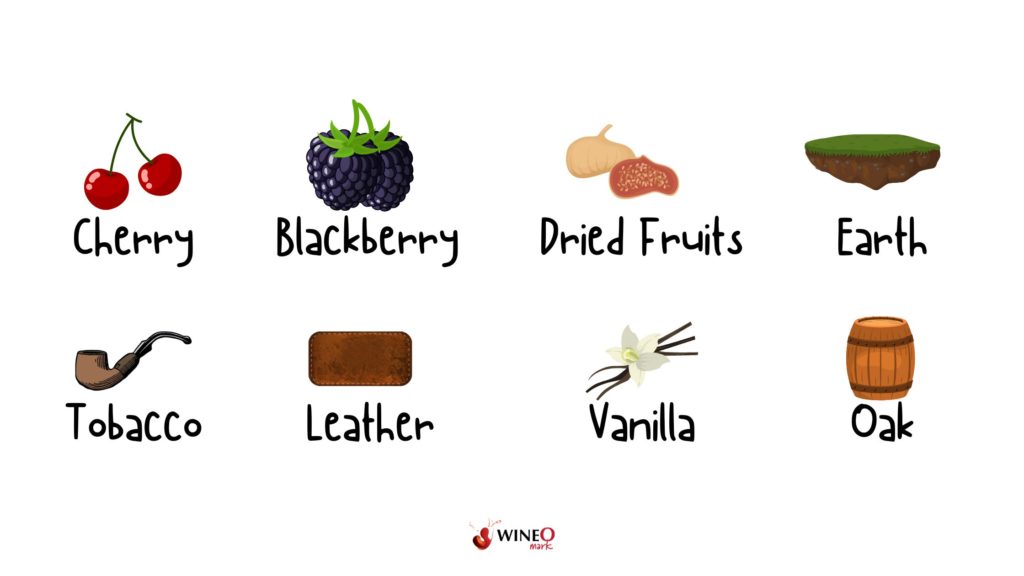
This grape produces full-bodied red wines with flavors of dark fruit, leather, and tobacco. And it’s the primary grape used in Spain’s famous Rioja region. Plus its thick skins contain a high concentration of tannins that add to the weight of the wine. In addition to its tannic structure, Tempranillo typically has high acidity and a complex flavor profile that can include notes of black fruit, leather, tobacco, and vanilla.
Sangiovese is the primary grape in Italy’s Chianti region and produces full-bodied red wines that are incredibly food friendly. It has bright acidity, high tannins, and flavors of dark cherry, raspberry, and spice. Also Sangiovese can be enjoyed as a single variety wine, or blended with other Italian grapes, to create complex full-bodied reds.

Barolo is one of Italy’s most famous premium full-bodied red wines. It is made from the Nebbiolo grape variety, which is known for its high tannins and acidity. Barolo is typically aged for several years in oak barrels, which contributes to its complexity and full-bodied nature.
And its also characterized by its flavors of dark fruit, tar, leather, and spice. These flavors, along with the wine’s high tannins and acidity, create a wine with a robust and weighty mouthfeel.
Cabernet Franc is a full-bodied red wine that is often blended with Cabernet Sauvignon and Merlot to create Bordeaux-style wines. It has bold tannins and dark fruit flavors of blackberry and cassis, along with herbaceous notes of green pepper and flowers. Plus it’s commonly aged in oak barrels, which can add additional flavors of vanilla, toast, and spice.

Full-bodied wines tend to pair well with hearty and rich dishes that can stand up to the wine’s bold flavors and high tannins. Here are some foods that you might consider pairing with full-bodied red wines:
Overall, the key to pairing full-bodied red wines with food is to find dishes that can stand up to the wine’s bold flavors and weight. Keep these general guidelines in mind, but don’t be afraid to experiment with different pairings to find your own personal favorites.
Winemakers can use several techniques to make full-bodied wines, depending on the grape varietals they are using and the desired flavor profile. Here are some common techniques used by winemakers to create full-bodied wines:
It’s difficult to determine the “most” full-bodied red wine as it ultimately comes down to how it’s made. However, some red wines are generally considered to be more full-bodied than others.
One of the most full-bodied red wines is typically considered to be Cabernet Sauvignon. Cabernet Sauvignon is known for its rich and robust flavor profile, high tannins, and full-bodied structure.
Other red wines that are often considered to be full-bodied include Syrah/Shiraz, Petite Sirah, Zinfandel, and Malbec. It’s important to note that the specific characteristics of a wine can vary depending on factors such as winemaking style, climate, and vineyard practices, so it’s always best to try different wines and find the ones that suit your personal taste preferences.
Dry, for the most part.
However, full-bodied red wine can be either sweet or dry, as sweetness is not necessarily an indicator of a wine’s body. Body refers to the weight and mouthfeel of a wine, which is determined by factors such as alcohol content, tannins, and acidity. A full-bodied wine will typically have a heavier, more substantial mouthfeel compared to a lighter-bodied wine.
Sweetness, on the other hand, refers to the residual sugar content of a wine. Some full-bodied red wines, such as Port (a fortified dessert wine), will have a sweeter taste due to residual sugar. However, many full-bodied red wines such as Cabernet Sauvignon or Malbec are dry, meaning they have little to no residual sugar.
Merlot is generally considered a medium to full-bodied red wine, although this can depend on the winemaker’s style and the region where the wine is produced. Merlot has a smooth and velvety texture and is known for its flavors of black cherry, plum, and chocolate. It typically has lower tannins compared to other full-bodied red wines such as Cabernet Sauvignon or Syrah/Shiraz.
Pinot Noir is generally considered a lighter-bodied red wine, but some styles can be considered medium to full-bodied. Pinot Noir is grown in many regions around the world and is known for its delicate and complex flavor profile, which can vary depending on factors such as climate, soil, and winemaking techniques.

Best Lunch In Napa – Our 12 Favorite Spots! Lunch is a must when you’re out wine tasting! Whether you’re in the mood for a

North Coast Wine Co. Outerbound Pinot Noir – WineO Mark Review Wine Stats Grape Variety: 100% Pinot Noir Vintage: 2019 ABV: 14% Wine Region: North Coast,

Böen Pinot Noir – WineO Mark Review Wine Stats Grape Variety: 100% Pinot Noir Vintage: 2021 ABV: 14.6% Wine Region: California Flavor Profile: Cherry, raspberry, blackberry,

Merry Edwards Sauvignon Blanc – WineO Mark Review Wine Stats Grape Variety: 100% Sauvignon Blanc Vintage: 2022 ABV: 14% Wine Region: Russian River Valley, California

The Hess Collection Allomi Chardonnay – WineO Mark Review Wine Stats Grape Variety: 100% Chardonnay Vintage: 2019 ABV: 14.3% Wine Region: Napa Valley, California Flavor Profile:

Stags’ Leap Chardonnay – WineO Mark Review Wine Stats Grape Variety: 100% Chardonnay Vintage: 2022 ABV: 14.1% Wine Region: Napa Valley, California Flavor Profile: Oak, vanilla,

Godeval Cepas Vellas Godello – WineO Mark Review Wine Stats Grape Variety: 100% Godello Vintage: 2021 ABV: 13% Wine Region: Valdeorras, Spain Flavor Profile: Peach,

Félix Solís Mucho Más Tinto N.V. – WineO Mark Review Wine Stats Grape Variety: Tempranillo, Syrah Vintage: Non-Vintage ABV: 14% Wine Region: Spain Flavor Profile: Vanilla,
